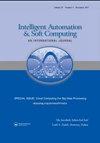使用机器学习算法确定COVID-19患者
IF 2
4区 计算机科学
Q2 Computer Science
引用次数: 9
摘要
冠状病毒病(COVID-19),也称为严重急性呼吸系统综合征(SARS-COV2),已引起全球公共卫生的深切关注。根据其在中国武汉市接触湿动物市场的人群中迅速蔓延的爆发,该城市被认为是其发源地。世界各地冠状病毒病例的症状、反应和康复率各不相同。患者人数仍在呈指数级增长,一些国家正在与第三波疫情作斗争。由于迄今为止尚未发现最有效的治疗方法,因此早期发现潜在的COVID-19患者可以帮助他们进行社会隔离,以减少传播并使曲线平坦。在这项研究中,我们探索了最新的冠状病毒疾病研究,以确定这种疾病对不同年龄组的影响。此外,我们分析了决策树(DT), k近邻(KNN),朴素贝叶斯(NB),支持向量机(SVM)和逻辑回归(LR)的性能,以根据患者的症状确定COVID-19。收集从公共存储库获得的数据集并对其进行预处理,然后对其应用选定的机器学习(ML)算法。结果表明,所有纳入的ML算法在确定潜在患者的COVID-19方面表现良好。NB和DT分类器表现最好,准确率为93.70%,而其他算法,如SVM、KNN和LR,准确率分别为93.60%、93.50%和92.80%。因此,我们确定ML模型在根据患者症状检测COVID-19方面具有重要作用。本文章由计算机程序翻译,如有差异,请以英文原文为准。
Determination of COVID-19 Patients Using Machine Learning Algorithms
Coronavirus disease (COVID-19), also known as Severe acute respiratory syndrome (SARS-COV2) and it has imposed deep concern on public health globally. Based on its fast-spreading breakout among the people exposed to the wet animal market in Wuhan city of China, the city was indicated as its origin. The symptoms, reactions, and the rate of recovery shown in the coronavirus cases worldwide have been varied. The number of patients is still rising exponentially, and some countries are now battling the third wave. Since the most effective treatment of this disease has not been discovered so far, early detection of potential COVID-19 patients can help isolate them socially to decrease the spread and flatten the curve. In this study, we explore state-of-the-art research on coronavirus disease to determine the impact of this illness among various age groups. Moreover, we analyze the performance of the Decision tree (DT), K-nearest neighbors (KNN), Naive bayes (NB), Support vector machine (SVM), and Logistic regression (LR) to determine COVID-19 in the patients based on their symptoms. A dataset obtained from a public repository was collected and pre-processed, before applying the selected Machine learning (ML) algorithms on them. The results demonstrate that all the ML algorithms incorporated perform well in determining COVID-19 in potential patients. NB and DT classifiers show the best performance with an accuracy of 93.70%, whereas other algorithms, such as SVM, KNN, and LR, demonstrate an accuracy of 93.60%, 93.50%, and 92.80% respectively. Hence, we determine that ML models have a significant role in detecting COVID-19 in patients based on their symptoms.
求助全文
通过发布文献求助,成功后即可免费获取论文全文。
去求助
来源期刊

Intelligent Automation and Soft Computing
工程技术-计算机:人工智能
CiteScore
3.50
自引率
10.00%
发文量
429
审稿时长
10.8 months
期刊介绍:
An International Journal seeks to provide a common forum for the dissemination of accurate results about the world of intelligent automation, artificial intelligence, computer science, control, intelligent data science, modeling and systems engineering. It is intended that the articles published in the journal will encompass both the short and the long term effects of soft computing and other related fields such as robotics, control, computer, vision, speech recognition, pattern recognition, data mining, big data, data analytics, machine intelligence, cyber security and deep learning. It further hopes it will address the existing and emerging relationships between automation, systems engineering, system of systems engineering and soft computing. The journal will publish original and survey papers on artificial intelligence, intelligent automation and computer engineering with an emphasis on current and potential applications of soft computing. It will have a broad interest in all engineering disciplines, computer science, and related technological fields such as medicine, biology operations research, technology management, agriculture and information technology.
 求助内容:
求助内容: 应助结果提醒方式:
应助结果提醒方式:


